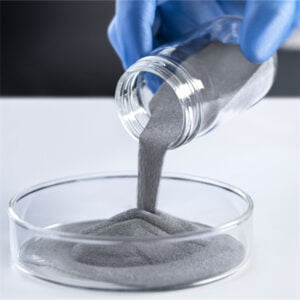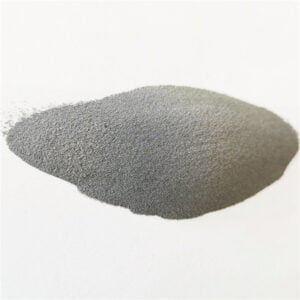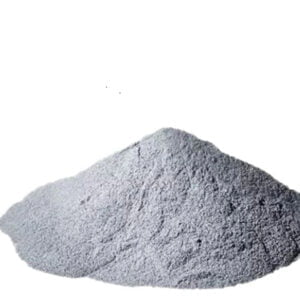Kovový prášek z titanu
Obsah
kovový prášek z titanu metallurgy enables fabricating advanced lightweight structural parts combining high specific strength, corrosion resistance and biocompatibility. This guide covers titanium powder production methods, characteristics, alloying strategies, applications, specifications, pricing, and comparisons against alternative metals. It also includes research directions and expert recommendations on processing titanium powder for optimized properties.
Přehled
Key attributes make titanium metal powder useful across industries from aerospace to medical:
- Highest strength-to-weight ratio of any metallic element
- Fully biocompatible and non-toxic
- Resists saltwater, aquatic and physiological corrosion
- Thermally inert from cryogenic to 600°C temperatures
- More ductile than competing high-strength alloys
- Powder bed fusion 3D printing compatibility
- Allows lightweight composites and reinforced structures
Continued titanium powder metallurgy developments now enable larger printed parts for orthopedic implants, aerospace components, automobile systems and many general engineering applications leveraging titanium’s intrinsic benefits.
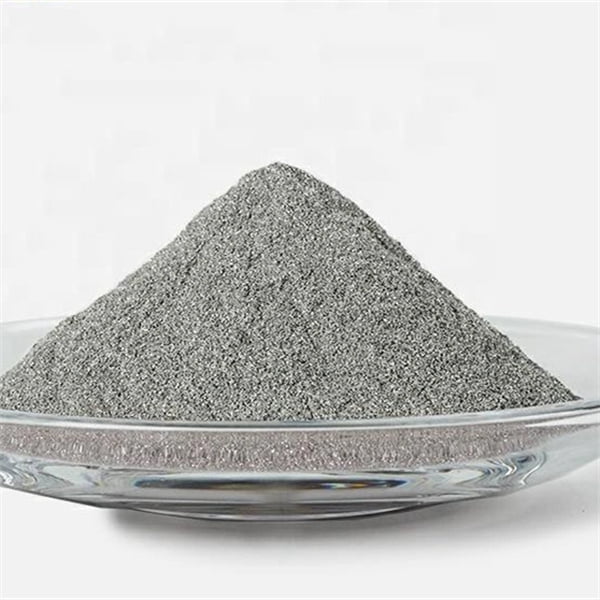
Kovový prášek z titanu Složení
Commercially pure titanium comprises >99% titanium with low oxygen and iron impurities:
| Živel | Hmotnost % | Role |
|---|---|---|
| titan (Ti) | 99.5%+ | Odolnost proti korozi, pevnost |
| Kyslík (O) | <0.20% | Contaminant – reduces ductility |
| železo (Fe) | <0.30% | Contaminant – reduces corrosion resistance |
| dusík (N) | <0,03% | Contaminant – causes embrittlement |
| uhlík (C) | <0.10% | Contaminant – reduces bonding |
The high reactivity of titanium means it is never found in pure form naturally. But once extracted and purified into powder, it demonstrates exceptional properties suitable for manufacturing high performance parts.
Charakteristika a vlastnosti
- Vysoký pevnost v tahu – 490 MPa
- Density – 4.5 g/cm3
- Bod tání – 1668°C
- Thermal expansion – 8.6 μm/(m.K)
- Elektrický odpor – 420 nΩ.m
- Tepelná vodivost – 21.9 W/(m.K)
- Paramagnetic with no biotoxicity
- Vynikající biokompatibilita
These properties depend strongly on impurity controls during powder production stages as described next.
Metody výroby titanového prášku
Armstrong Process
- Reducing titanium tetrachloride with sodium/magnesium under inert atmosphere
- Facilitates low interstitial elemental powder suited for additive manufacturing
Hydride-Dehydride (HDH) Process
- Most common method converting titanium sponge into spherical powder
- Lower cost but higher oxygen pickup requiring optimization
| Kroky | Podrobnosti |
|---|---|
| Vstupní suroviny | Titanium ingot or sponge |
| Hydriding | Process reacting Ti with hydrogen to make brittle TiH2 |
| Frézování | Crushing hydride into fine powder particles |
| De-hydriding | Carefully removing hydrogen from TiH2 |
| Kondice | Desiccation, blending, particle size distribution adjustment |
| Závěrečné testování | Chemical assays, particle size distribution, morphology checks |
Key characteristics:
- Particle sizes tuned between 15 microns to 150 microns
- Near spherical morphologies with some satellites
- Controlled low oxygen and nitrogen impurity levels
- Minimized surface oxidation using stabilization heat treatments
- Custom chemistry blending possible by mixing hydride powders
The next section highlights some approaches to consolidate titanium powder into end use parts and components.
Applications Using Kovový prášek z titanu
Aditivní výroba
- 3D printing complex geometries using laser powder bed fusion
- Aerospace and medical implants like orthopedic knee/hip joints
- Light weighting otherwise machined components
Vstřikování prášku
- High volume net shape small components like fasteners
- Cost effective consolidation into titanium hardware
Vstřikování kovů
- Small intricate titanium parts with thin walls
- Corrosion resistant valves and fittings
Práškové metalurgické lisy a spékače
- Hot Isostatic Pressing of encapsulated titanium
- Porous structures like bone in-growth surfaces
Tepelný nástřik
- Wear and corrosion resistant titanium coatings
- Salvaging worn components via metallic coatings
Vznikající: Binder jet 3D printing using polymer adhesives alongside ultrasonic consolidation and cold spray additive techniques now under development.
Next we outline general specification details used to order custom titanium powder.
-
 Ti45Nb prášek pro aditivní výrobu
Ti45Nb prášek pro aditivní výrobu -
 Prášek ze slitiny TiNb
Prášek ze slitiny TiNb -
 Prášek ze slitiny TiNbZrSn
Prášek ze slitiny TiNbZrSn -
 Ti6Al4V prášek Kovový prášek na bázi titanu pro aditivní výrobu
Ti6Al4V prášek Kovový prášek na bázi titanu pro aditivní výrobu -
 CPTi prášek
CPTi prášek -
 TC18 Powder : Odemknutí síly karbidu titanu
TC18 Powder : Odemknutí síly karbidu titanu -
 TC11 Powder: Komplexní průvodce
TC11 Powder: Komplexní průvodce -
 TC4 ELI prášek
TC4 ELI prášek -
 Nejlepší prášek Ti-6Al-4V (TC4 Powder) pro aditivní výrobu
Nejlepší prášek Ti-6Al-4V (TC4 Powder) pro aditivní výrobu
Specifikace titanového prášku
Commercially available titanium powder for industrial uses conforms to established quality metrics:
| Parametr | Typické hodnoty |
|---|---|
| Distribuce velikosti částic | 10 μm až 150 μm |
| Tvar částice | Převážně sférické |
| tap density | 2.2 g/cc to 3.0 g/cc |
| Zdánlivá hustota | 1.5 g/cc to 2.0 g/cc |
| Čistota | 99.7% titanium content |
| Oxygen Impurity | <2000 ppm |
| Nitrogen Impurity | <150 ppm |
| Hydrogen Impurity | <100 ppm |
| Tekutost | Improved via dry coatings |
Particle engineering – Smaller is difficult but better. Larger than 100 microns risks imperfections.
Čistota – Vital to properties and depends on production route.
Vlastnosti prášku – Matched to consolidation technique and desired material performance.
Significant customization possible but requires MOQ batch commitments. Supply partnerships facilitate application development.
Titanium Powder Processing Insights
Handling fine titanium powder poses combustion risks needing safety controls:
- Use inert gas glove boxes for storage and handling
- Avoid storing bulk quantities near ignition sources
- Electrically ground equipment to dissipate static buildup
- Employ dedicated vacuum and ventilation systems
- Thermally protect reactive intermediates like hydride
- Follow strict safety protocols given material reactivity
The next section examines the economics around titanium powder which remains costlier than traditional wrought metal forms.
Titanium Powder Price Analysis
| Produkt | Cenové rozpětí |
|---|---|
| R&D grade Ti powder | $800+ per kg |
| Průmyslová třída | $100+ za kg |
| Letecká třída | $200+ per kg |
| Lékařská kvalita | $500+ per kg |
Powder production economics dominate finished part costs relative to added material value. But lightweight potential justifies adoption for aviation, space and racing mobility applications.
Tight chemistry requirements for biocompatibility certification uplift medical pricing tiers. High nitrogen makes powder unsuitable for bone contact implant devices.
Supply partnerships and qualified LTA arrangements help secure best pricing stabilizing variable raw material volatility in export-controlled titanium sponge costs.
Comparison Against Alternatives
Titanium competes against steels, aluminum alloys, magnesum and advanced composites:
| Materiál | Pevnost v tahu | Hustota | Odolnost proti korozi | Biologická kompatibilita | Náklady |
|---|---|---|---|---|---|
| Titanium Ti64 | Vysoký | Světlo | Vynikající | Vynikající | $$$ |
| Nerezová ocel 316L | Střední | Těžké | Dobrý | Veletrh | $ |
| Al 6061 | Střední | Světlo | Špatný | Dobrý | $ |
| CoCr Alloys | Vysoký | Těžké | Vynikající | Toxicity risks | $$ |
| Mg AZ91 | Nízký | Lightest | Veletrh | Dobrý | $ |
| Peek Polymer | Střední | Nízký | Vynikající | Bio-inert | $$$ |
Titanium Benefits
- Highest strength to weight ratio
- Full corrosion resistance
- Proven biocompatibility
- Available supply infrastructure
Titanium Limitations
- High sensitivity to design geometries
- Tricky burn-out and debinding
- Reactive powder handling needs controls
- Relatively expensive feedstock pricing
Understanding these technical and commercial trade-offs helps identify ideal applications benefitting most from titanium powder metallurgy.
Research and Development Outlook
Emerging efforts to improve titanium powder include:
Slitinový design
- Customized compositions for dermatological implants
- High entropy alloys with exotic elemental blends
Modeling
- Predicting microstructural evolution during heat treatments
- Characterizing powder reuse limits
Proces AM
- Binder jet printing followed by microwave sintering
- Hybrid manufacturing combining cold spray densification
Výroba prášku
- Electrostatic spheroidization without hydriding
- Low cost titanium powder blends through reuse
Aplikace
- Qualifying aerospace turbine prototypes
- Electronics thermal management devices
- Continuously variable transmission gearbox
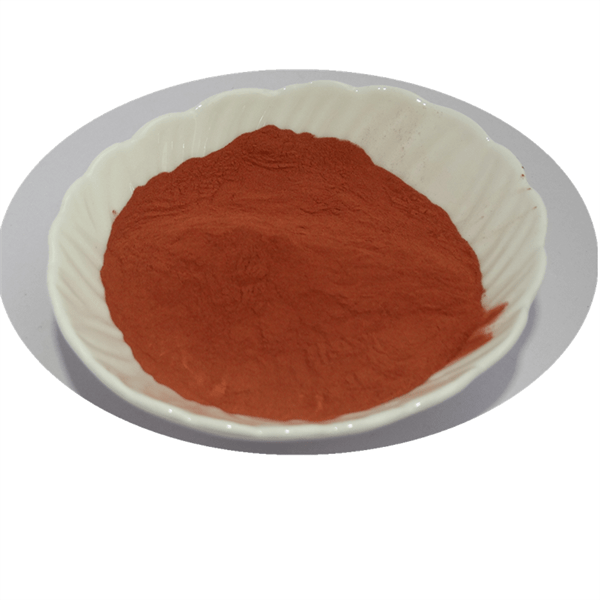
Souhrn
Titanium is the highest strength-to-weight ratio metallic element but has always been notoriously difficult to extract and fabricate using traditional casting and machining techniques. Recent powder metallurgy advances transform titanium’s potential to deliver lightweight, high strength printed parts combining corrosion resistance and biocompatibility. Tailoring chemistry compliance across medical, aerospace and automotive applications now unlocks innovative geometries previously impossible, technically or economically. However handling the pyrophoric reactivity risks of fine titanium powder remains an expertise barrier needing extreme vigilance when exploring adoption. Working closely with specialist materials partners allows harnessing titanium’s full potential while mitigating operational risks.
Sdílet na
MET3DP Technology Co., LTD je předním poskytovatelem řešení aditivní výroby se sídlem v Qingdao v Číně. Naše společnost se specializuje na zařízení pro 3D tisk a vysoce výkonné kovové prášky pro průmyslové aplikace.
Dotaz k získání nejlepší ceny a přizpůsobeného řešení pro vaše podnikání!
Související články

Vysoce výkonné segmenty lopatek trysek: Revoluce v účinnosti turbín díky 3D tisku z kovu
Přečtěte si více "O Met3DP
Nedávná aktualizace
Náš produkt
KONTAKTUJTE NÁS
Nějaké otázky? Pošlete nám zprávu hned teď! Po obdržení vaší zprávy obsloužíme vaši žádost s celým týmem.

Kovové prášky pro 3D tisk a aditivní výrobu
SPOLEČNOST
PRODUKT
kontaktní informace
- Město Qingdao, Shandong, Čína
- [email protected]
- [email protected]
- +86 19116340731









